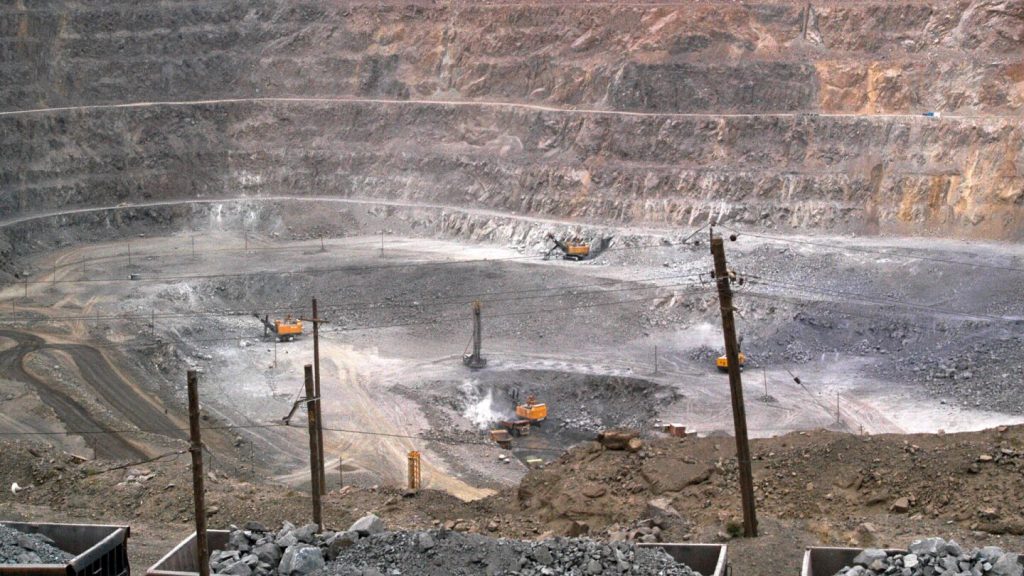Listen to the article
The European Union has reached an agreement with China to stabilize the flow of rare earth materials, critical components for high-tech and military products, according to an EU official on Tuesday. The announcement comes after EU Trade Commissioner Maroš Šefčovič met with Chinese Commerce Minister Wang Wentao in Brussels last Friday.
During their meeting, the officials discussed Beijing’s export controls on rare earths implemented earlier this year and European regulations on semiconductor sales, said Olof Gill, spokesperson for the European Commission.
Europe, like the United States, maintains a substantial trade deficit with China—approximately 300 billion euros ($345 billion) last year. The EU heavily depends on China for rare earth materials, which are essential in manufacturing magnets used in automobiles, appliances, and various technological devices.
Gill expressed the EU’s appreciation for China’s recent 12-month suspension of rare earth export controls and emphasized the need for a new, stable trading system for these critical materials. The EU is collaborating with China to develop an export licensing system aimed at ensuring a more consistent supply of rare earth minerals to the bloc.
“This is an appropriate and responsible step in the context of ensuring stable global trade flows in a critically important area,” Gill stated.
Commissioner Šefčovič noted that discussions between Brussels and Beijing regarding additional trade measures would continue. “Both sides reaffirmed commitment to continue engagement on improving the implementation of export control policies,” he wrote in a post on X, formerly Twitter.
The agreement marks a significant development in the complex trading relationship between the two economic powers. China represents the EU’s second-largest trading partner in goods, following the United States, with bilateral trade estimated at 2.3 billion euros ($2.7 billion) daily.
Rare earth elements, despite their name, are relatively abundant in the Earth’s crust but are difficult and environmentally challenging to extract and process. They include materials such as neodymium, praseodymium, and dysprosium, which are crucial components in everything from smartphones and electric vehicles to wind turbines and military equipment.
China has dominated the global rare earth supply chain for decades, controlling approximately 70% of worldwide production and as much as 90% of processing capacity. This dominance has created vulnerabilities for Western economies, particularly as geopolitical tensions have risen in recent years.
The EU has been actively working to reduce its dependence on China for these critical materials through its Critical Raw Materials Act, announced in 2023. The legislation aims to secure sustainable supply chains, diversify imports, and improve recycling capabilities within the bloc.
Market analysts suggest this agreement could help stabilize prices and supply chains that have experienced volatility in recent years. Industrial users in Europe have faced challenges with unpredictable pricing and availability, affecting manufacturing planning and costs.
Both economic powers appear to recognize the mutual benefits of maintaining stable trade relations, especially given current global economic uncertainties. The two sides also share certain climate goals that require the use of these materials in green technologies such as electric vehicles and renewable energy infrastructure.
The agreement represents a pragmatic approach amid broader trade tensions, including ongoing EU concerns about market access in China, state subsidies, and intellectual property protections. While this specific arrangement addresses one critical area of commerce, numerous other trade issues remain on the agenda for future discussions between Brussels and Beijing.
Fact Checker
Verify the accuracy of this article using The Disinformation Commission analysis and real-time sources.




5 Comments
While the suspension of China’s rare earth export controls is a good start, the EU will need to continue diversifying its sources of supply to reduce reliance on a single dominant producer. Diversification is key to ensuring long-term security of access.
China’s rare earth dominance has been a concern for many countries, so this move by the EU and China to work together on an export licensing system is an important step. It will be interesting to see how this affects global rare earth prices and availability.
Rare earths are essential for many modern technologies, from electric vehicles to renewable energy. I hope the new agreement leads to a more reliable and transparent global supply chain for these strategic resources.
The EU’s trade deficit with China is substantial, so any steps to improve trading conditions for critical materials like rare earths are positive. Cooperation between the two economic blocs on this issue seems like a pragmatic approach.
This is welcome news for the EU and its high-tech industries. Maintaining a stable supply of rare earth materials is crucial for Europe’s competitiveness and innovation. I’m curious to see how the new export licensing system will work in practice.